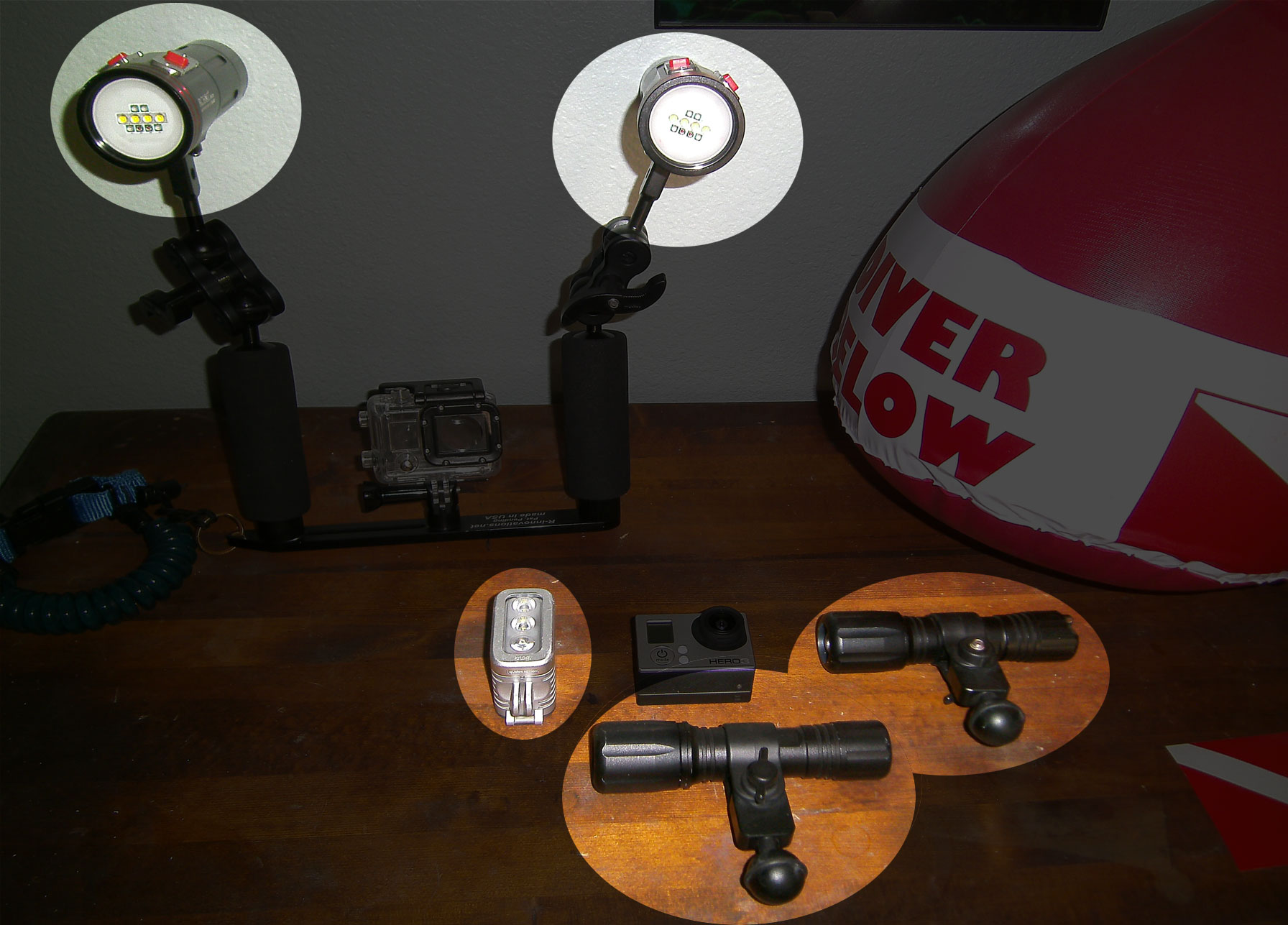In this GoPro Underwater Video Light Comparison video, we are comparing several types of lights and how they look underwater. Disclaimer: This is a brief overview, rather than a “buy this and all your problems will be solved recommendation”. These tools on the video are giving you a comparison on the same type of dive, same type of light, similar subjects for a direct comparison. Do your homework if your are shopping for underwater video lights to avoid falling into a costly mistake.
To learn more about the different types of lights, check out our article and video: Underwater Video Lights : Guide Before You Buy.
-
GoPro vs. a Flashlight
If you are new to diving while recording at night, this piece of video will answer a lot of questions for you immediately.
First, “can I record without a light”? Yes, you can and you will be very disappointed.
Next, “can I record with just a flashlight”? Yes, you can and you can use this type of lighting to create suspense in your videos, but it’s not ideal for consistent quality video. -
GoPro vs. Dual 250 Lumen Direct Lights
The “basic” or affordable entry level lighting system, complete with tray. This set up can be used for direct daylight diving on single close-range subjects like a single fish within 3 foot of your GoPro. It will light up the subject, and put great focus on the marine life. Dual lights allow you to angle one light directly at something like a fish, while aiming the other at an angle to minimize backscatter.
As you will see in the video, dual lights with direct beams at night offer a “binocular” effect on GoPro’s wide angle field of view. This is not ideal for most types of video shooting, but can once again, can offer suspense and a very specific type of night diving video.
-
GoPro vs. 400 Lumen GoPro Video Light
There are dozens of “GoPro Video Lights” out there in the free world. You’ll find varying levels of lumen power, angles, settings and more. In this video, you will see the Knog by Qudos, (which is also a fantastic bike light as well). It can be used as a primary light for night diving because it has a great amount of endurance, several settings and is small enough to stay out the way of your camera system. It can also be clicked off quickly while filming with a larger set of lights.
This light does offer a fairly powerful single beam, wider than the dual lights in the video, but doesn’t do much for video in high plankton and silty conditions. Great, lightweight, small light, and pretty solid for daylight diving on close subjects.
-
GoPro vs. Dual 2500 Lumen Wide Angle Lights
Again, there are several 2500-2600 lumen video lights out there, not specifically for GoPro, but getting into the more pricey range for your average hobby shooter. In this video, you will see three comparisons of this lighting system, complete with tray: daylight setting, half power and blue light.
During a sunny day in 30-50 feet, the daylight setting is quite fantastic, but you may find that at close range, it is a bit much for marine life. It may take a while to determine what is “too close” and some adjustments may have to be made.At night, the half power setting is ideal. Plankton and silt in the water can be compared like driving with your high beam headlights vs low beams in a snowstorm. You’ll quickly be able to determine how much is too much.
The blue light. Fun for “flourescent” night diving, this light does give you a bit a psychedelic dive, but also is great for getting closer to critters without scaring them. This gives your hands a break from the worms buzzing around your hands in between critter sightings, as well as getting closer to other types of marine life.
Enjoy the video below and be sure to check out the guide before you buy so you can consider the proper lighting system for your specific needs. Also, enjoy our full tarpon video for more footage with the dual 2500 lumen lights. Happy shooting!

